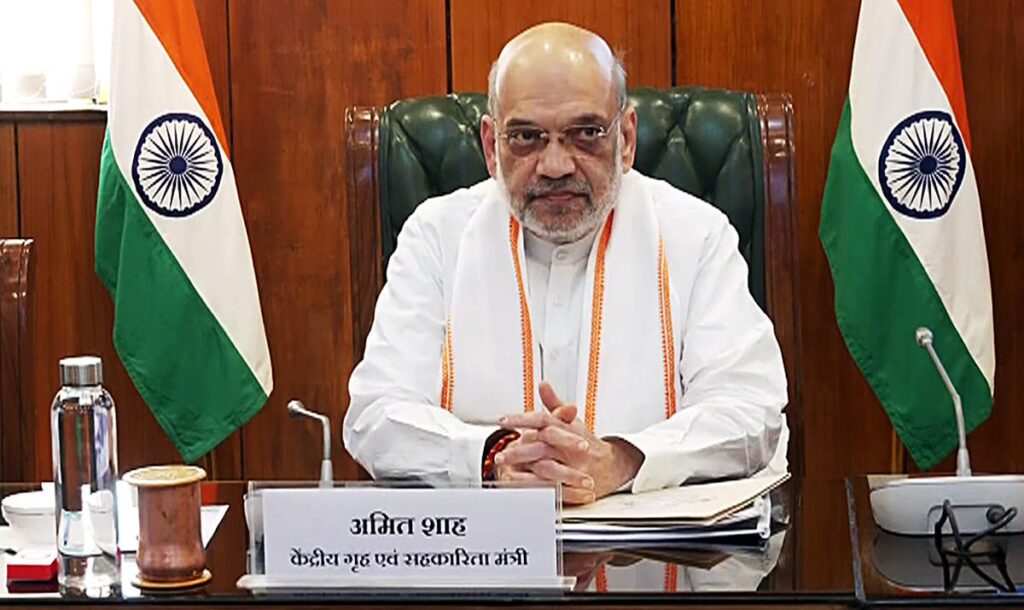India has taken a major step toward enhancing passenger experience at airports and modernizing its border control systems. Union Home Minister Amit Shah inaugurated the Fast Track Immigration – Trusted Traveller Programme (FTI-TTP), aimed at providing seamless and faster immigration clearance for pre-verified travelers.
The move is a key part of India’s Digital India mission and aligns with global practices such as the US Global Entry Program and UK Registered Traveller Service.
What is FTI-TTP?
The Fast Track Immigration – Trusted Traveller Programme (FTI-TTP) is designed to reduce wait times and improve efficiency at immigration counters by allowing registered and pre-screened passengers to use dedicated lanes at airports.
The programme uses advanced biometric verification and risk assessment technology to identify low-risk travelers, ensuring a secure yet faster entry and exit process.
Launch Event
The inauguration ceremony was held in New Delhi, attended by senior officials from the Ministry of Home Affairs, Bureau of Immigration, and airport operators.
During the launch, Amit Shah emphasized that this initiative reflects India’s commitment to ease of travel, digital governance, and passenger safety. He highlighted that the program will help both Indian citizens and eligible foreign travelers, making India’s airports more globally competitive.
Key Features of the FTI-TTP

Here’s what makes the programme significant:
- Pre-Verification of Travelers: Passengers are screened and enrolled after a background check by the immigration department.
- Dedicated Fast Track Lanes: Separate lanes at major international airports for quick immigration clearance.
- Use of Biometrics: Fingerprints and facial recognition technology for secure verification.
- Digital Application Process: Registration through an online portal for hassle-free enrollment.
- Global Alignment: Similar to international programs like US Global Entry, making Indian airports globally competitive.
Benefits for Passengers
The FTI-TTP will transform the airport experience in India, especially for frequent travelers.
- Reduced Waiting Time: Priority lanes mean significantly shorter queues.
- Convenience for Business Travelers: Smooth immigration clearance helps professionals save time.
- Boost for Tourism: Makes India a more attractive destination for foreign tourists.
- Efficiency for Airports: Streamlines immigration process and reduces congestion.
Significance for India
This initiative is a milestone in India’s journey to become a global travel hub:
- Boost to International Connectivity: Facilitates quicker movement of people across borders.
- Supports India’s G20 Commitments: Encourages safe, secure, and frictionless travel.
- Technology-Driven Governance: Strengthens India’s reputation for using digital tools to improve citizen services.
- Economic Impact: Faster clearance encourages tourism, trade, and business travel, contributing to economic growth.
Amit Shah’s Remarks
While inaugurating the programme, Amit Shah highlighted that the initiative is part of the government’s vision of Viksit Bharat (Developed India) 2047. He stated:
“The FTI-TTP will make immigration at Indian airports smoother and more secure. It is a major step in our efforts to create world-class infrastructure and provide global-standard services to travelers.”
He also stressed that security would not be compromised, as only pre-verified and low-risk passengers will be allowed access to the program.
Comparison with Global Systems
Globally, several countries have introduced similar programs:
- United States – Global Entry: Allows pre-approved travelers expedited entry through automated kiosks.
- United Kingdom – Registered Traveller Service: Offers faster entry at UK border control for frequent visitors.
- Singapore – Frequent Traveller Programme: Uses biometrics for faster clearance at Changi Airport.
India’s FTI-TTP is now on par with these systems, signaling India’s commitment to improving traveler experience and security standards.
Implementation and Future Plans
Initially, the FTI-TTP will be rolled out at major international airports like:
- Delhi Indira Gandhi International Airport
- Mumbai Chhatrapati Shivaji Maharaj International Airport
- Bengaluru Kempegowda International Airport
- Hyderabad Rajiv Gandhi International Airport
Gradually, the program will expand to other airports. Authorities are also considering reciprocal arrangements with other countries, so Indian citizens can enjoy fast-track entry abroad as well.
Challenges and Considerations
While the programme is a positive step, some challenges must be addressed:
- Data Security: Protection of biometric data is crucial.
- Public Awareness: Clear communication is needed to encourage enrollment.
- Infrastructure Readiness: Dedicated lanes and biometric systems must function seamlessly.
Why This Matters Globally
For readers in the US, UK, and other countries, this move is important because:
- Business Travel: Makes India more accessible for executives and investors.
- Tourism Growth: Simplifies entry for tourists, boosting India’s global tourism profile.
- Tech Adoption: Showcases India’s ability to deploy large-scale, tech-driven public systems.
Conclusion
The inauguration of the Fast Track Immigration – Trusted Traveller Programme (FTI-TTP) by Amit Shah represents a significant leap forward in India’s travel and immigration infrastructure.
With dedicated lanes, biometric verification, and global-standard facilities, India is set to offer a world-class travel experience to its citizens and international visitors. This initiative not only saves time but also strengthens security, aligning perfectly with India’s vision of a modern, digital-first economy.
As more airports come under the program’s coverage, and as reciprocal arrangements with other countries take shape, the FTI-TTP could transform India into one of the most traveler-friendly destinations worldwide.

